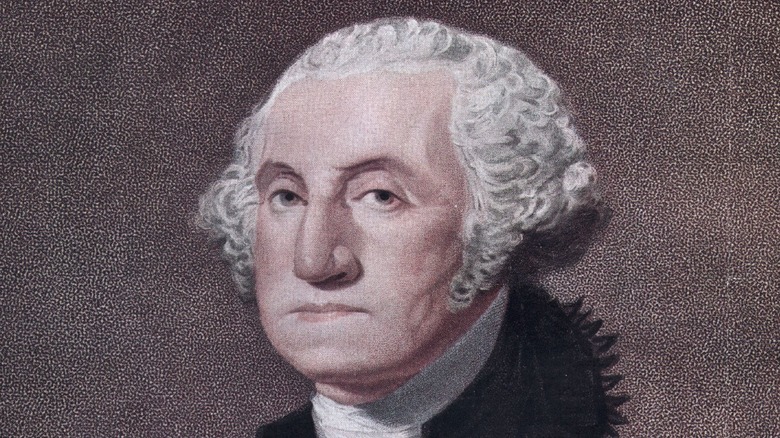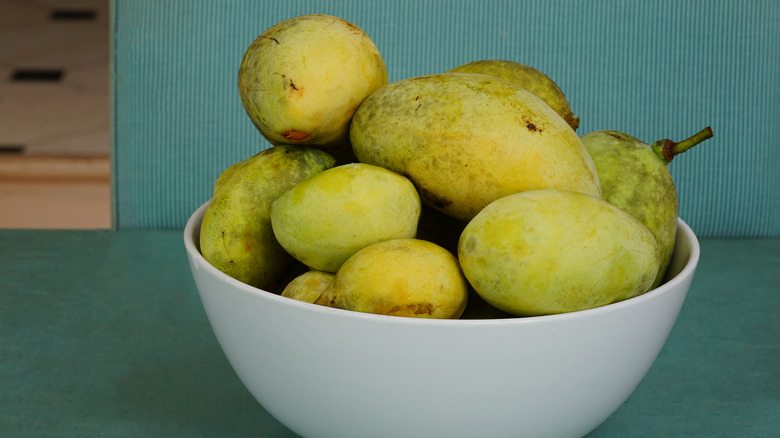George Washington's Favorite Fruit Might Surprise You
The average American consumer has a wide variety of fruits and vegetables available to them to make a part of their diet. Further, cultivation techniques have developed to such an extent that it's entirely possible to farm non-native foodstuffs in our fields and greenhouses, and anything that can't be grown here can be easily imported.
However, centuries ago, things were different. Early Americans may have brought seeds of native European fruits on voyages with them, but it's a long time from seedling to edible fruit on your plate, and that often meant making do with what was available to you naturally. Fortunately, North America is replete with plenty of native fruits, including blackberries, grapes, and other varieties that are now rather obscure, according to World Atlas. Indeed, none other than the Father Of Our Country, George Washington, was a fan of a native fruit. Unfortunately, these days it's rather hard to find at the grocery store, although a few farmers are hoping it will make a resurgence in the American culinary scene.
George Washington loved pawpaws
One native North American fruit that wasn't imported from Europe and grew naturally here long before the colonists first arrived in the 16th century was and is the pawpaw (Asimina triloba). Early settlers were perhaps not too keen on the native fruit, as they made no attempt to cultivate it, per World Atlas. George Washington, however, couldn't get enough of it. Indeed, the first president was apparently drawn to the fruit's pudding-like texture and mango-like taste (via Virginia Mercury).
Modern-day fans of the fruit, however, don't have a lot of options. A few diehards know where wild patches are available for harvest, but buying it commercially is a fool's game. The fruit spoils quickly and isn't amenable to cross-country shipping, meaning that any cultivation efforts are almost certainly going to be aimed at local markets. However, agriculturalist Reza Rafie says he hopes pawpaws find their place in the American landscape. "It's a really nice plant to add to anyone's backyard," he said.

